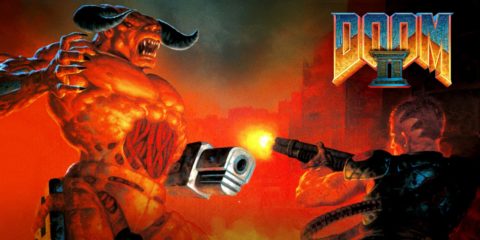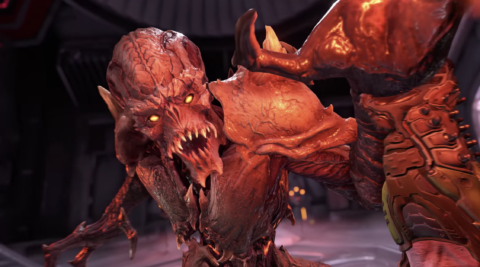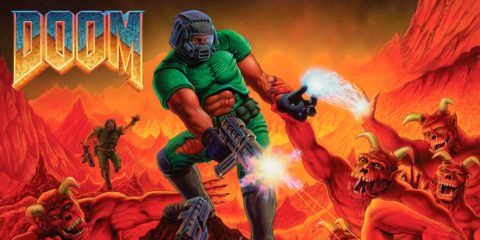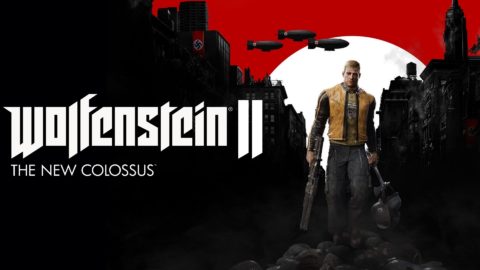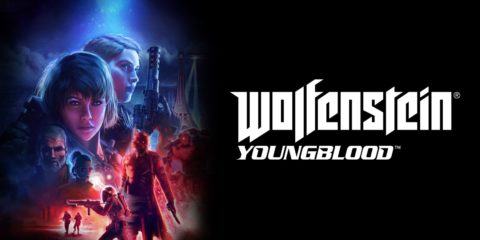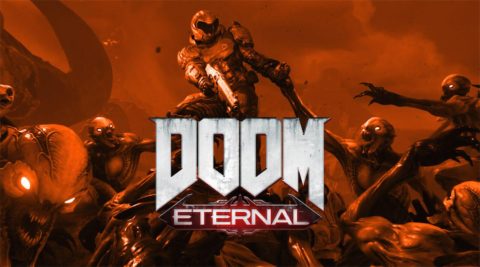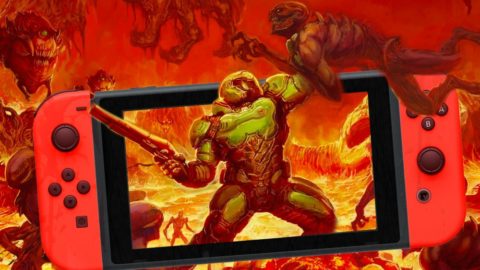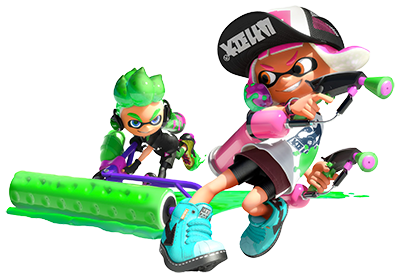For a series that prides itself on its fast-paced gameplay and intricate level design, DOOM 3‘s transition into action-horror is an interesting evolution. It shouldn’t come as a complete surprise, however. The DOOM series has historically used demonic themes to convey its unsettling elements, but they’ve never been the focal point of the experience. This entry flips that upside down by ensuring that its carefully crafted atmosphere and enemies always take center stage. Even if it doesn’t contain the core characteristics of the franchise, DOOM 3 is a worthwhile addition to the series.
Another Demonic Invasion
From the very beginning, the DOOM series didn’t care much about storytelling. The first DOOM barely even had a story and although the sequel made more of an effort, it was still a small one. DOOM 3 forgoes tradition by focusing heavily on its narrative presentation. This entry employs narrative elements like cutscenes and fully voiced characters to unravel its tale on Hell’s demonic invaders.
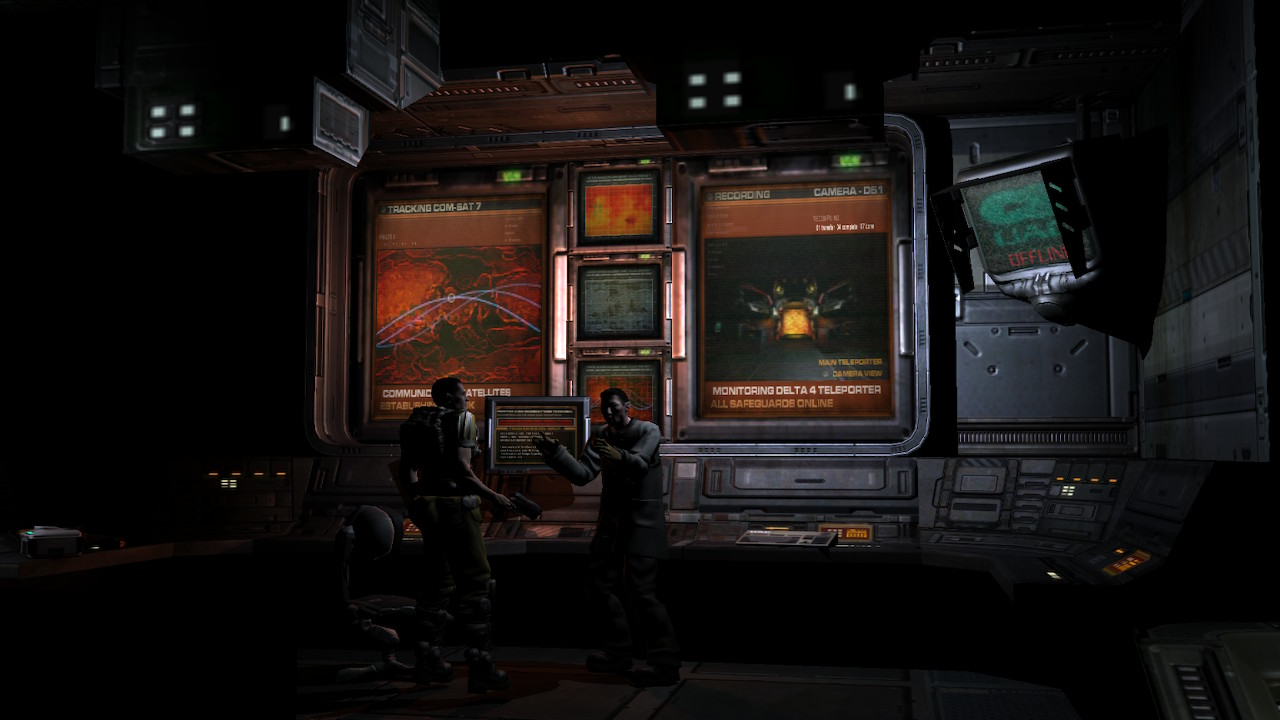
DOOM 3 follows the story of an unnamed space marine sent to the Union Aerospace Corporation’s research facilities on Mars. Strange incidents at the facilities are causing employees to freak out and panic. These issues have forced the UAC to send board member Elliot Swann to speak with the facility leader, Dr. Malcolm Betruger, about what’s going on. Shortly after arriving, a shockwave surges throughout the facility and soon enough demonic forces start invading the planet. The unnamed space marine must defeat the demons, uncover the origins of this disaster, and figure out how to put a stop to the invasion for good.
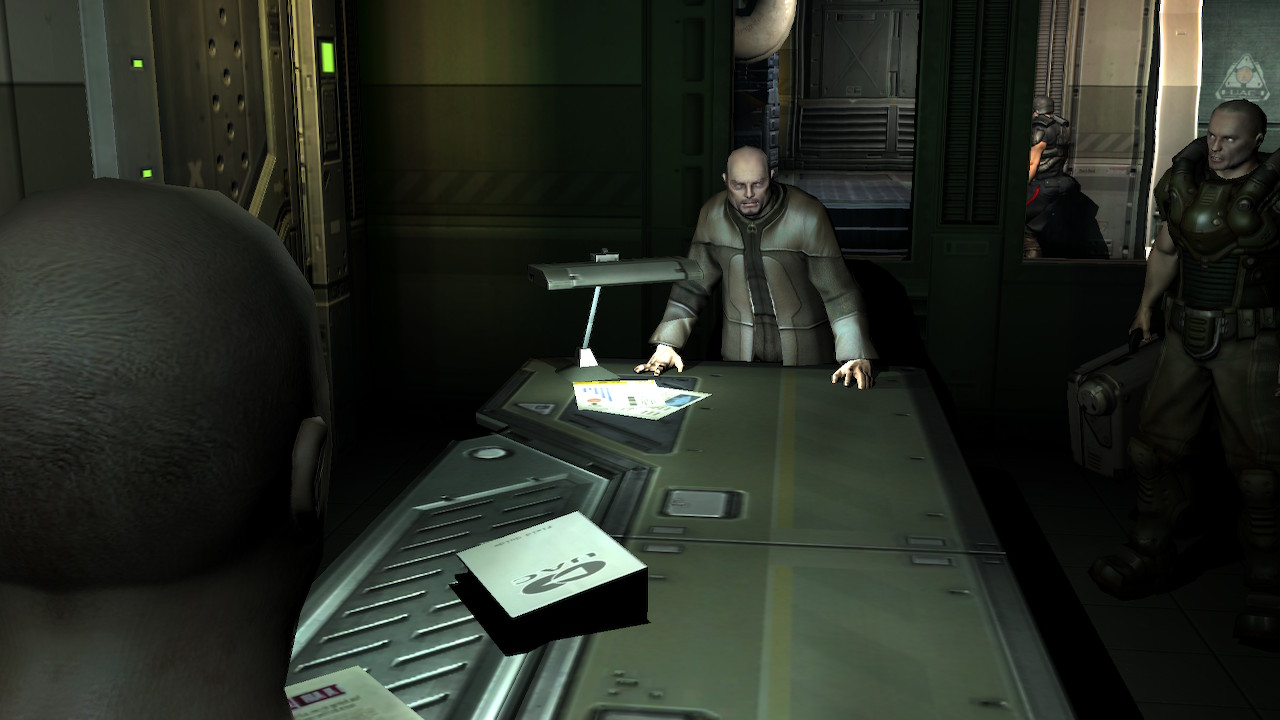
As much as I appreciate the fact that DOOM 3 makes a grand effort to tell a story, it doesn’t do it well. The main story followed by our space marine isn’t all that unique or original. It’s made worse by the fact that almost everything about the narrative delivery is flat. From the voice acting to the dialogue to even the cutscenes, these methods of delivery fail to make the story feel compelling in any capacity. It’s a shame because the underlying story uncovered through collectible PDAs does tell a captivating narrative about ancient artifacts and interdimensional travel. Ultimately, DOOM 3 feels like an early 2000s action film that takes itself a little too seriously.
The Delightful in the Disturbing
Where DOOM 3 fails to capture players with its narrative, it succeeds at doing so through its environments and atmosphere. The lifeless gray halls of the UAC’s research facilities would be unremarkable on their own, but DOOM 3 makes excellent use of lighting, sound effects, and environmental storytelling to create an incredibly engaging atmosphere. It feels like the researchers truly lived there, and exploring these abandoned halls after disaster struck feels haunting. Common horror tropes like dark rooms, jump scares, and moving shadows are thoughtfully used to enhance this tension. These elements reasonably lose their edge by the end of the experience but making my way through the ominous interiors of the UAC facilities will stick with me as my favorite part of this title.
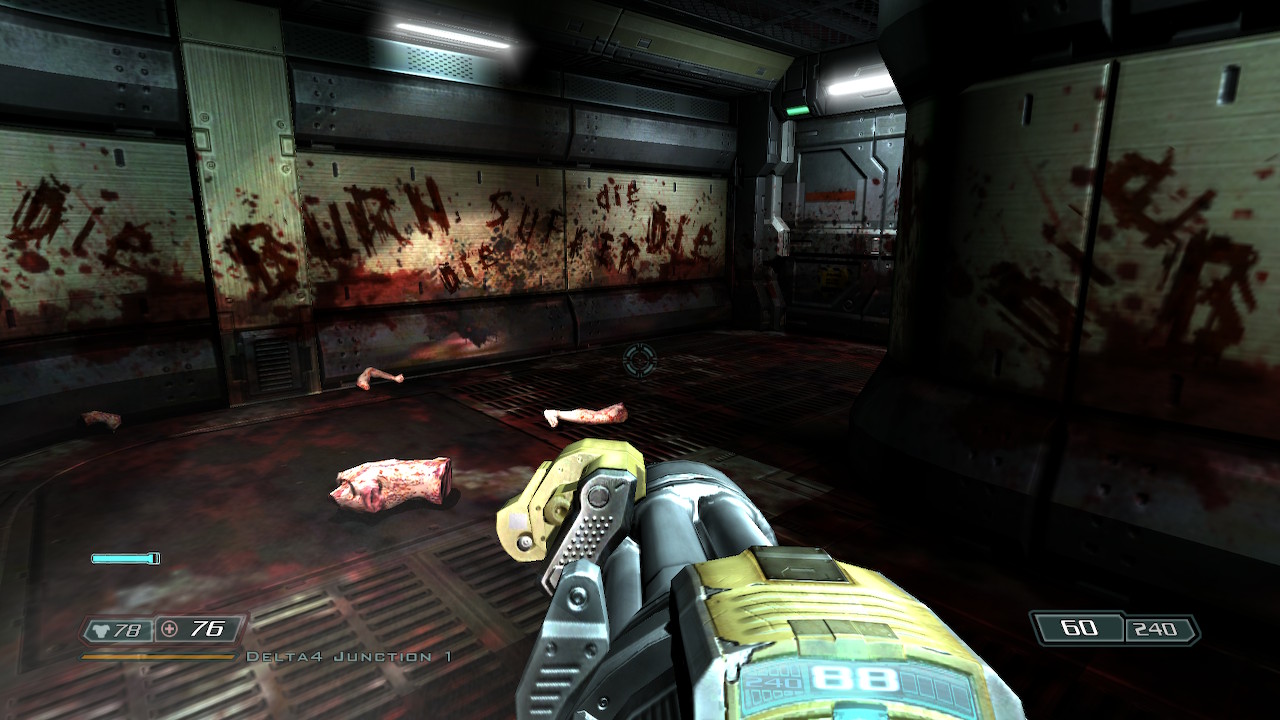
The suspenseful environments and atmosphere wouldn’t feel as tense if it weren’t for the actual threats roaming about. DOOM 3 brings back several series favorite demons like imps, revenants, and cacodemons in glorious detail. One of my favorite things about the game was seeing how the team at iD Software brought these previously simple sprites to life in a detailed 3D space. Enemies like the Archvile were already scary enough in DOOM II, but watching them exist in HD is even more terrifying. DOOM 3 features several new enemies and enemy types to expand its selection of demons. From the insect-baby hybrid Cherub to the freaky but cool looking Wraith, there are plenty of new things to kill (and inhabit your nightmares).
Shots In The Dark
The gameplay in DOOM 3 is not as fast-paced as its predecessors. It shares the same concept of collecting items to unlock areas in order to reach the exit, but everything around that feels different. Gone is the sense of urgency to quickly move from room to room to wipe out every enemy in sight. Instead, DOOM 3 forces players to move carefully and deliberately through the game’s dark rooms and tight corridors. Thankfully, our space marine is armed with everything they need to survive Hell on Mars.
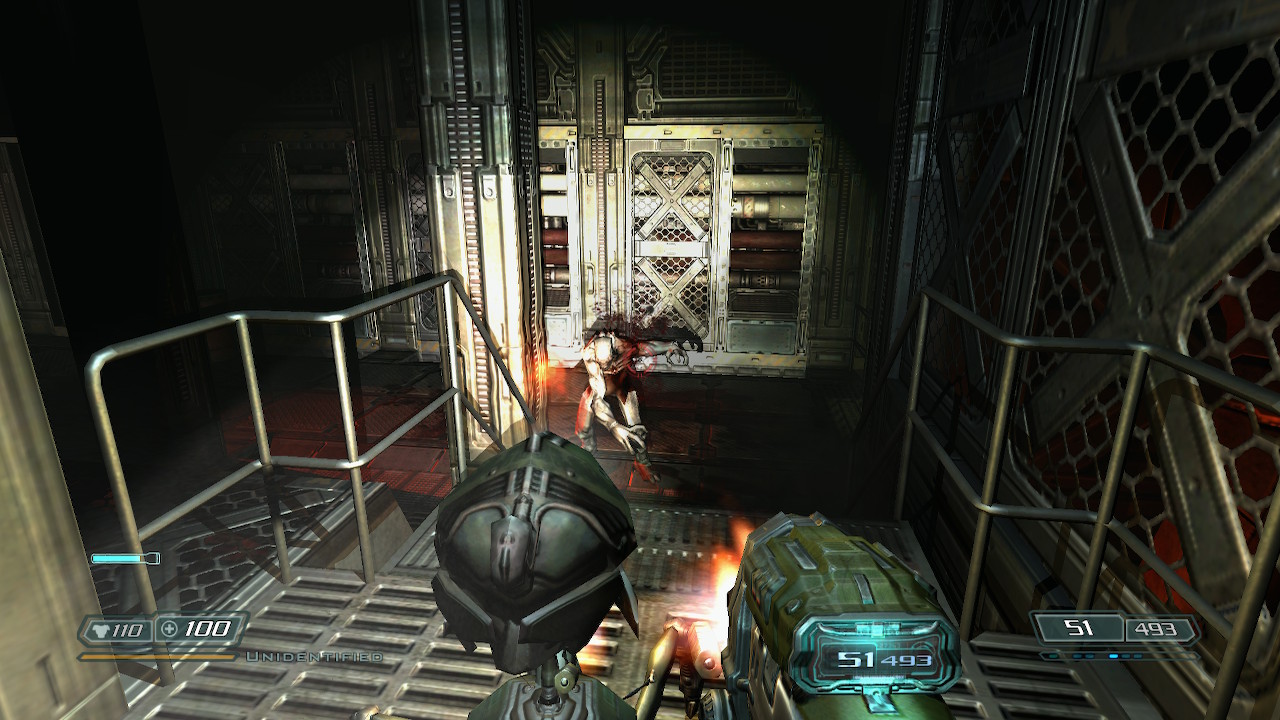
The main campaign features almost every weapon from the classic DOOM titles (the Super Shotgun is only available in the expansions). Iconic weapons like the BFG-9000, plasma gun and chainsaw all make a welcome return with fancy new animations. They do add some issues that didn’t exist in the classic DOOM titles, though. Waiting for a reload animation to finish before being able to switch to another weapon is a bummer. Shuffling through each weapon during an intense fight also isn’t the best experience out there. They don’t feel as powerful as their classic counterparts, but they are still satisfying to shoot.
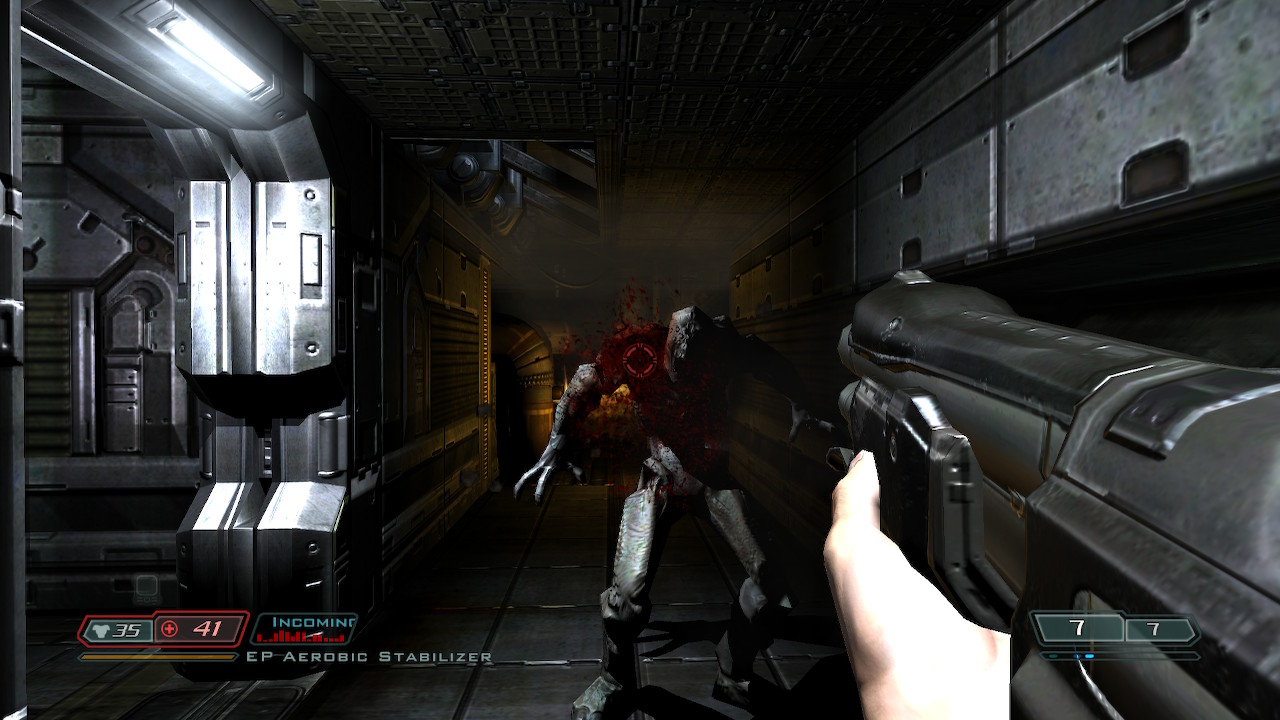
There aren’t many new weapons available except for a few campaign-specific weapons/tools. Without spoiling much, the main campaign features an incredibly cool weapon that can save players in a pinch. However, out of all the weapons in the space marine’s arsenal, the most important tool they carry is the flashlight. Good luck trying to shoot at demons when you can’t even see them coming until it’s too late. I can’t overstate how necessary (and fun to use) the flashlight is to your survival.
Claustrophobic Combat
The linear level design and dark atmosphere go hand-in-hand to ensure that most enemy encounters occur in areas with limited free space for movement. DOOM 3 capitalizes on this tension by forcing players into uneasy close-quarters encounters. There’s a real sense of fear and concern as you fight these horrific demons in a claustrophobic setting. It’s a nice change of pace at first but can become monotonous by the end of the campaign.
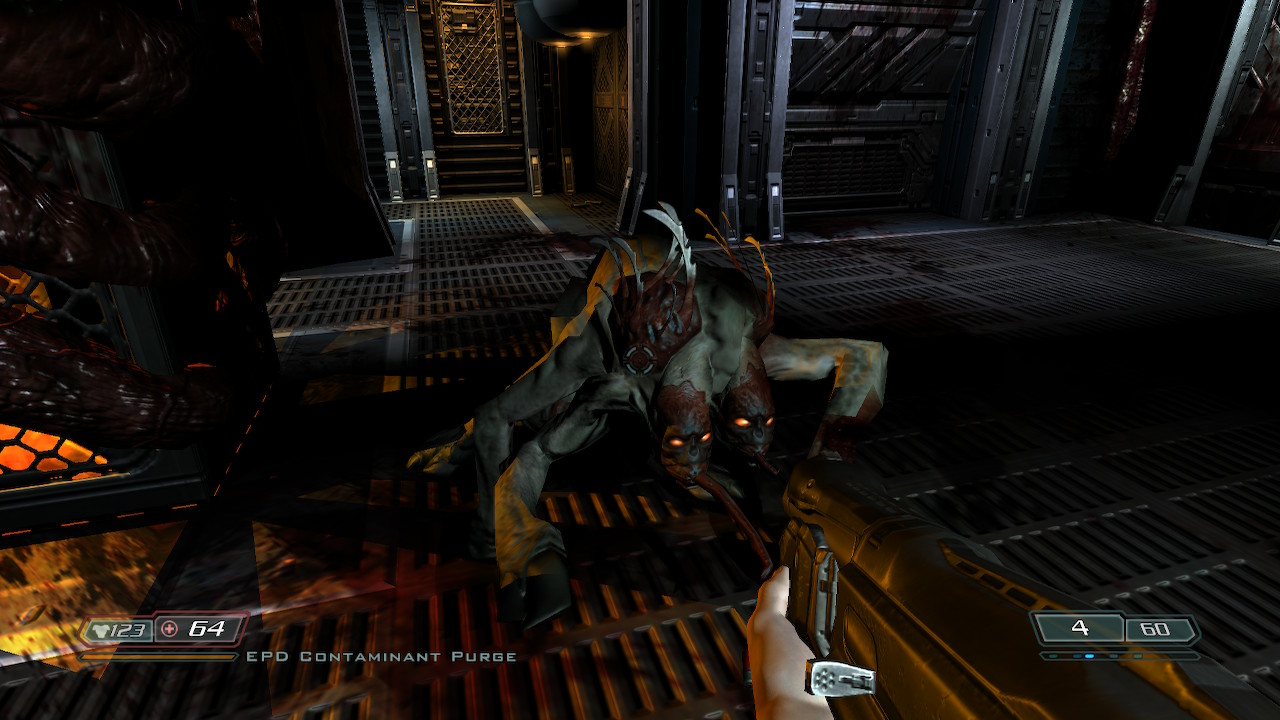
Even with all the weapon and enemy variety, these gunfights end up feeling repetitive as a result of the linear and tight level design. There are only so many ways you can shoot at an enemy down a hall or run up to one in a close space. At least some enemies try to attack you in different ways, but they ultimately end up using the same pattern.
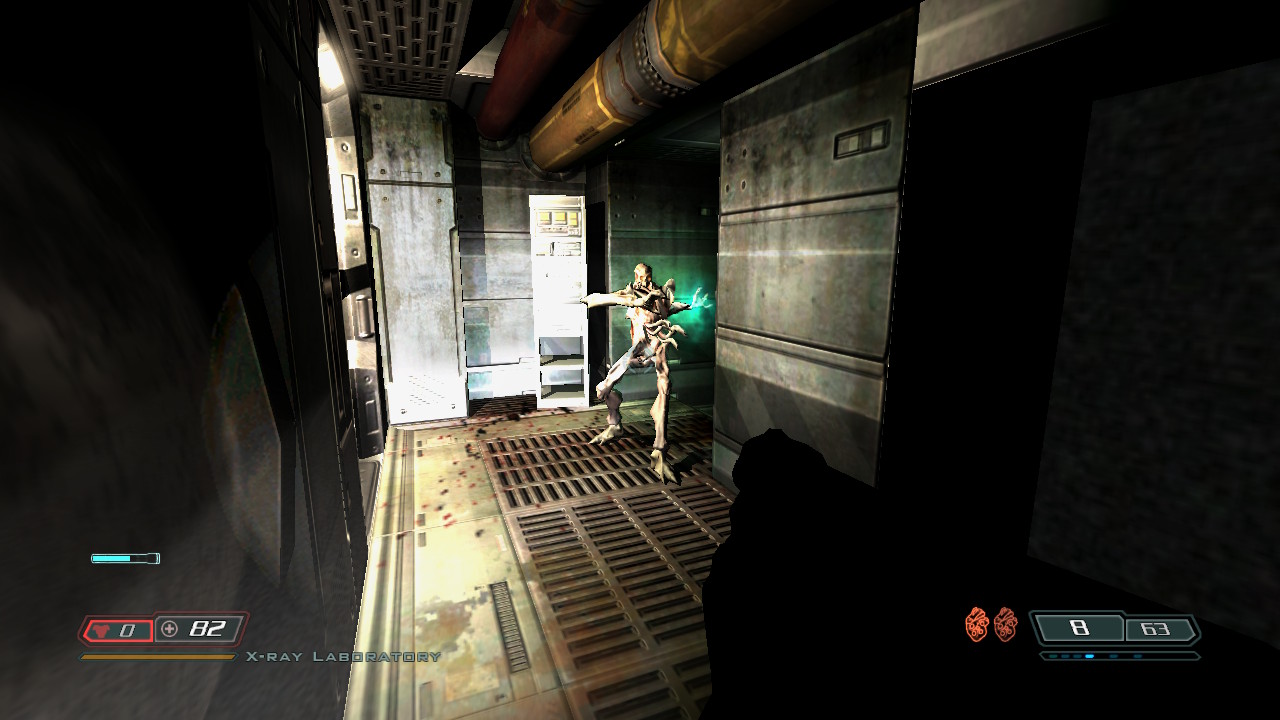
The real challenge in the gameplay comes from managing your health and ammo during these encounters. There will be moments when you are low on health and run out of ammo for your favorite weapons and will have to tough it out until you reach a supply locker or find resources lying around. Surprisingly, these moments don’t feel frustrating and instead feel like organic parts of the overall tension.
One Hell of a Time
The best part of the DOOM 3 campaigns are the levels that take place in Hell. Even though they’re linear, these levels feature large, open areas where players can freely engage enemies however they see fit. The levels themselves are a relieving change of scenery from the gray and dark corridors of the UAC research facilities. Hell is decorated in all kinds of fire, brimstone, and oppressive demonic architecture. Exploring these areas is a blast, and easily the most exciting and refreshing part of the whole experience.
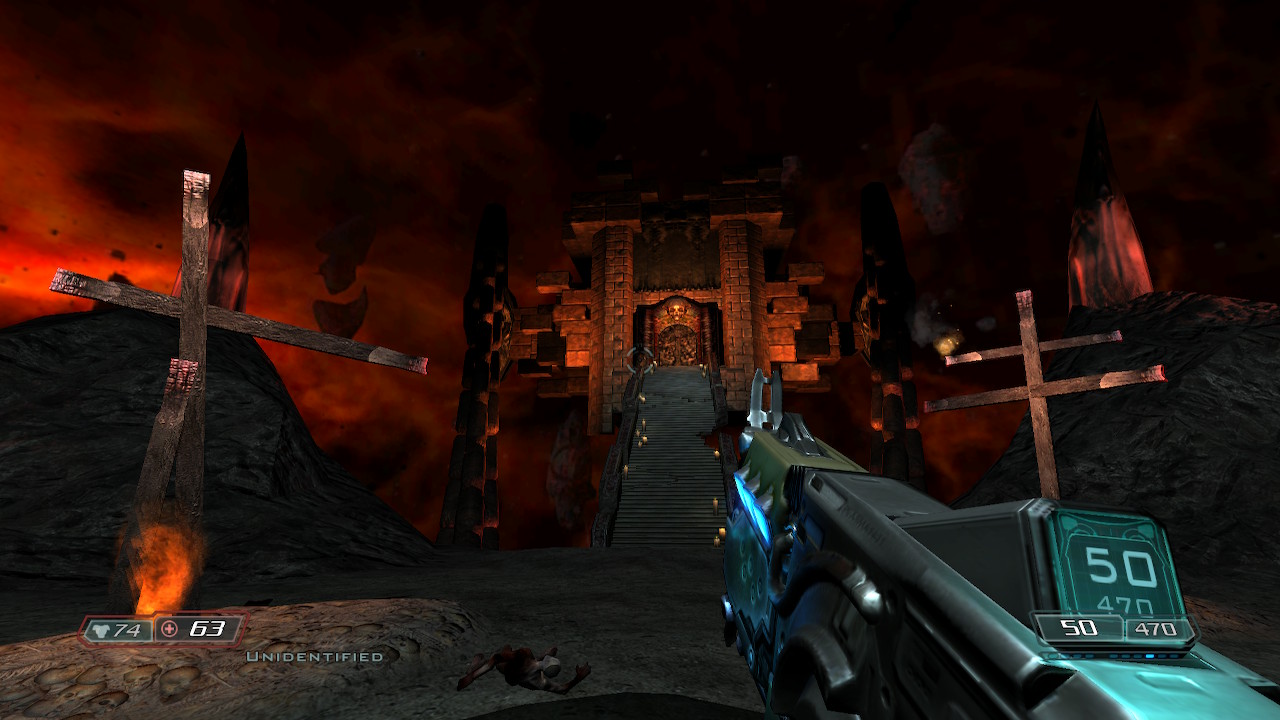
To be clear, I don’t believe linear level design is necessarily a bad thing. In the case of DOOM 3, the levels kind of all blend together because of the suspenseful theme the game is going for. However, there was not a single moment in this game where I thought I played a bad level. Even though they are a little repetitive, each level is solid and I never came away frustrated or upset by the experience (which is something I can’t say about the first two DOOM titles).
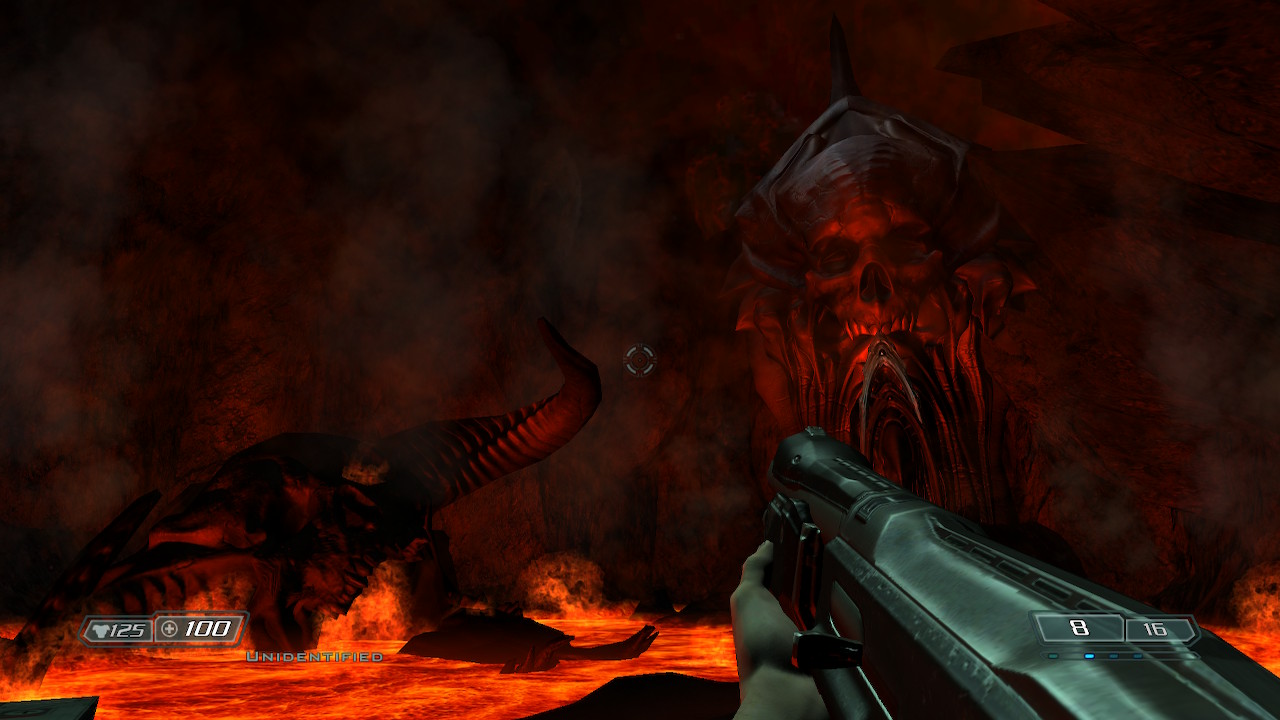
With all this being said, I feel that the main campaign overstays its welcome a little bit. By the time I returned from Hell, I was ready to experience something new. Thankfully, the Switch port of DOOM 3 contains the Resurrection of Evil and The Lost Mission expansions.
Resurrection of Evil
DOOM 3: Resurrection of Evil takes place two years after the events of the main campaign and focuses on the discovery of a demonic artifact. The “Heart of Hell” triggers another demonic invasion in which the demons are trying to take their artifact back. With the aid of Dr. Elizabeth McNeil, the space marine must stop the invasion by returning the artifact to Hell by any means necessary.
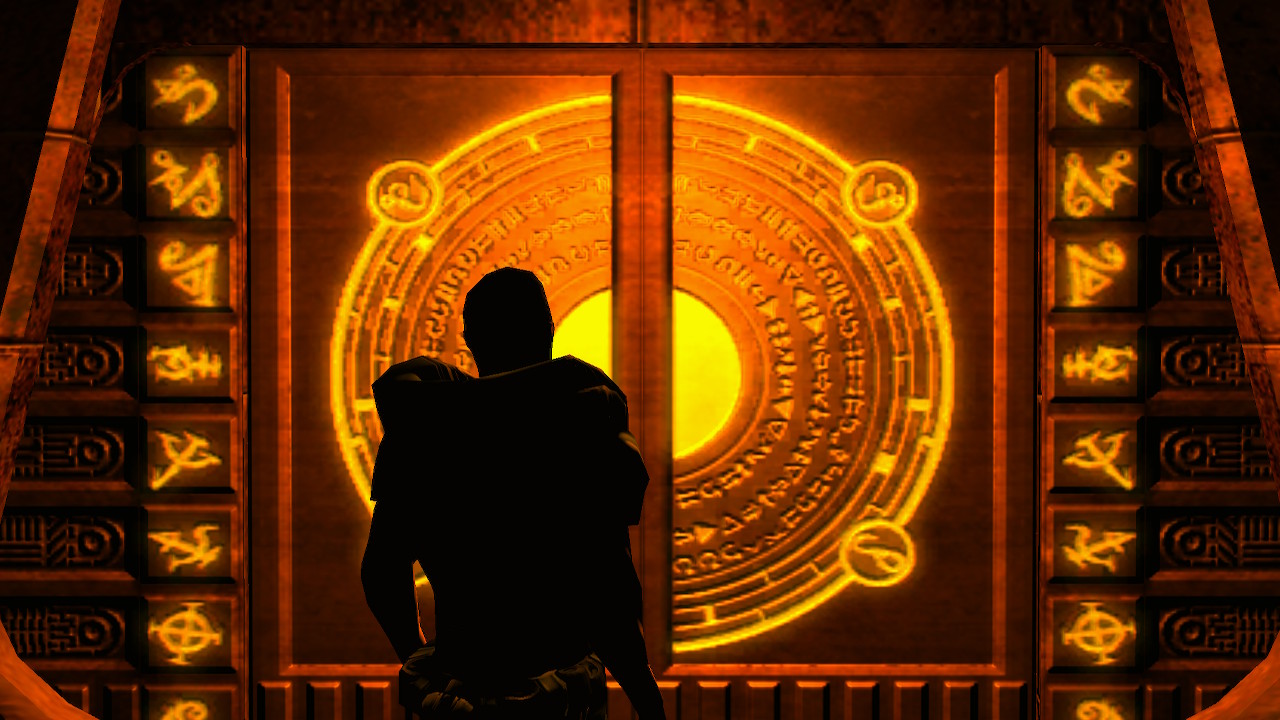
RoE introduces a couple of new gameplay mechanics to DOOM 3. Shortly after the start of the campaign, players gain access to the “Heart of Evil” and “The Grabber.” The “Heart of Evil” gives players the ability to slow down time, allowing them to traverse through fast-moving obstacles, solve puzzles, or escape from gauntlets of enemies with ease. The Grabber allows players to “grab” and manipulate certain objects and enemies. Boxes, barrels, and smaller enemies like the Cherub can be picked up and hurled across the screen for fun and creative destruction. The Grabber can grab energy-based projectiles from imps or other enemies so you can use them in combat or to destroy certain things in the level.
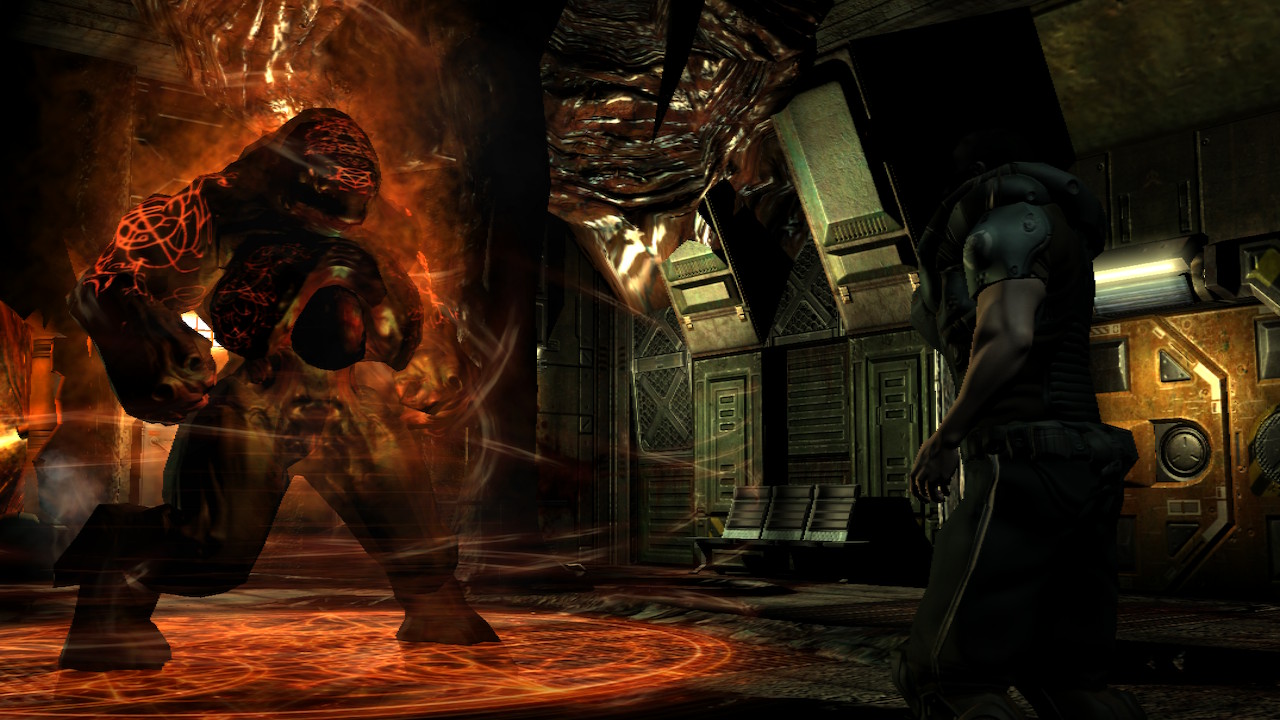
These new gameplay mechanics and the shorter campaign allow the RoE experience to feel a lot more cohesive than the main campaign. I had a lot of fun going through these levels and defeating the creative “Hell Hunter” boss fights. By the end of the campaign, I found myself feeling a lot more satisfied with it than the main one. I believe the action-horror elements that DOOM 3 is going for work well in these focused bursts. The horror elements don’t overstay their welcome and the new mechanics make sure there is more variety to the gameplay.
The Lost Mission
The Lost Mission takes place at the same time the events of the main campaign occur. It follows the story of the last surviving member of the Bravo Team that we see get ambushed in DOOM 3. While escaping, the space marine meets up with a doctor in the UAC research facilities. This doctor needs help in destroying a powerful teleporter the UAC left activated in Hell. The space marine must find a way to travel to Hell and destroy the teleporter before the demons can use it to invade Earth.
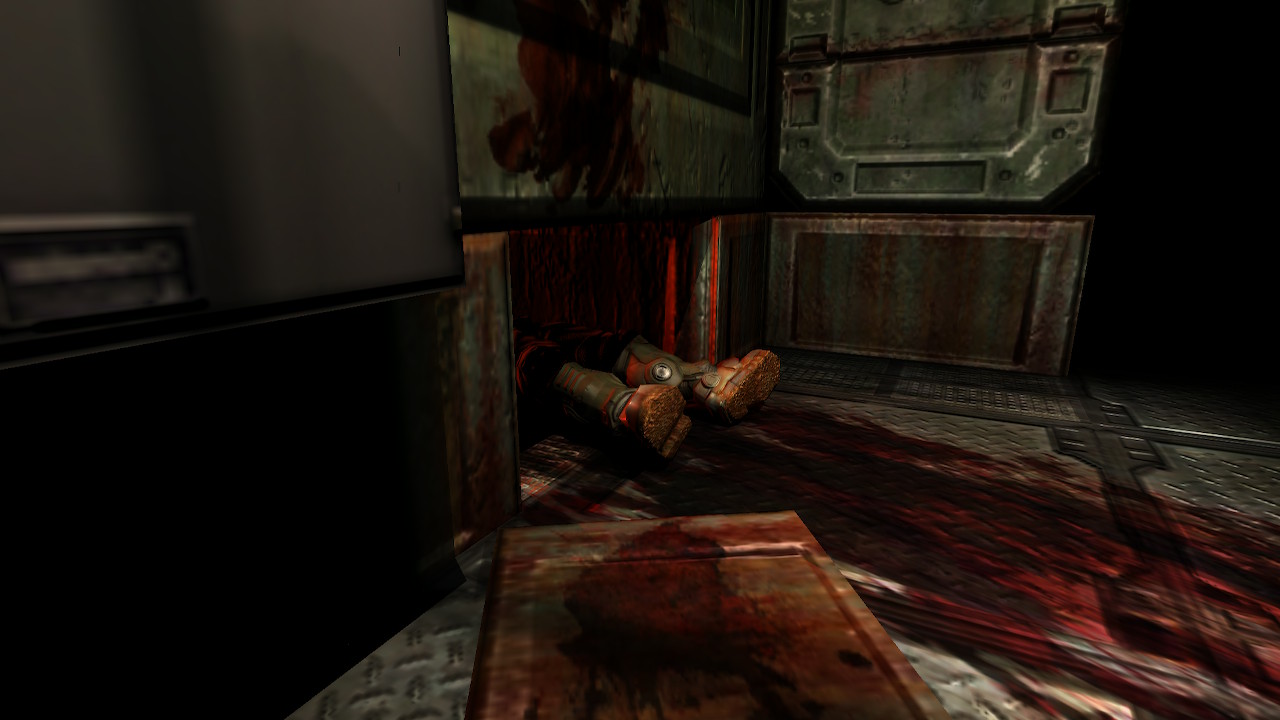
Like I mentioned earlier, the shorter campaigns work well for the type of action-horror gameplay DOOM 3 is going for. The Lost Mission feels short, sweet, and focused. There aren’t any major story elements or new gameplay mechanics in this one – just a solid collection of challenging levels with an exciting final boss fight.
Final Thoughts
DOOM 3 is the strangest entry in the series thanks to its slower-paced action, linear level design, and its heavier focus on narrative presentation. Almost everything about it goes against what the classic entries established more than 10 years before it. Despite its differences, DOOM 3 does an incredible job at creating a tense and suspenseful atmosphere that deserves to be experienced by old fans and newcomers alike. Walking through the haunted research facilities and encountering all manner of demonic forces is exciting, even if it does feel overdone by the end of the main campaign. Good thing DOOM 3‘s two expansions provide shorter and more focused campaigns that succeed at refreshing the action-horror experience. By the time I finished everything DOOM 3 had to offer, I came away satisfied with my adventures. DOOM 3 is available now on the Nintendo eShop for $19.99.
Review Copy Provided by Bethesda
